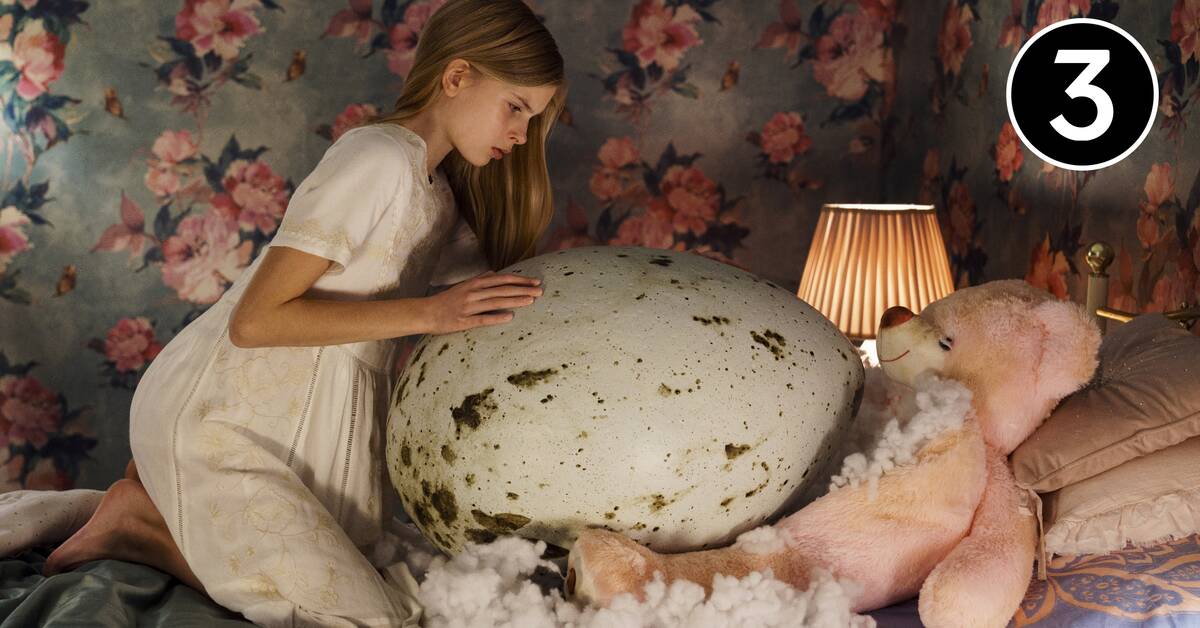In this Finnish
imagination, we stand by the side of the prepubertal Tinja and look at her shimmering family happiness on the surface.
Mom has a vlog where she pumps out directed videos that market the family as a harmonious and loving little collective, with games in the well-groomed garden - in backlight through Vaseline lens.
But of course the polished surface speaks with a split tongue.
It is rather an insta-parody created by a mother with pathological performance anxiety and a hysterical smile;
an emotionally disturbed woman who happily tells her daughter that she is in love with another.
The father, in turn, has completely abdicated and explains the mother's infidelity to Tinja, by saying that the wife has "a strong personality".
Tinja is fighting on
anyway, unbreakably loyal.
Smile at the right times.
Performs on the gym mat so the hands bleed and mom can post more videos.
Absorbs the psychological heritage.
After an incident where a stray crow trashes the living room, and most literally crushes the false idyll, things are put to an end.
Tinja finds a large egg in the forest, hides it in her flowery room and soon it starts to grow.
Really.
And out comes a carnal visualization of her anguish.
An ET with lousy attitude.
Or a metaphor for her incipient transformation from kind girl to teenage monster.
Thus a "coming of age" story with bloody bite.
Fear of people
thrives in the Nordic countries: The bio-current Icelandic
Lamb
, Norwegian
The Innocents
and not so long ago Swedish
Border
.
Folkloristic drama horror in our Nordic everyday life.
It's just to thank and receive.
The trend can possibly be traced all the way back to the fact that the imagination got new air under the dragon wings with Peter Jackson's The
Lord of the Rings
trilogy - and then
Game of Thrones
brought new blood into the genre.
Since then, it has rolled on and the step from fantasy to folklore is not very far.
The subgroups still come from the same source: a belief in, and the desire to portray, the fantastic, the supernatural in various ways.
In short: fairy tales for big kids.
In addition, the computer-generated effects (cgi) have become increasingly better and have - above all important - become available to even those without a Jackson budget.
Hanna Bergholm's
(director) and Ilja Rautsi's (script) first feature film leans really hard on the computer.
Which can be difficult, and of course there are some moments when the creature is shown in a slightly too clear picture;
then it's almost like being transported back to
Gremlin's
days, but in the name of honesty it may be due more to the odd look of things than to the cgi.
Nor is it what makes the experience lose in suggestion the longer the short film (86 minutes) suffers.
Instead, it makes some slightly difficult-to-digest premises and the somewhat predictable plot - but it is still uplifting that the Nordic film has begun to stretch the frames, daring to do other than drama, broad comedy and dark-eyed crime.

